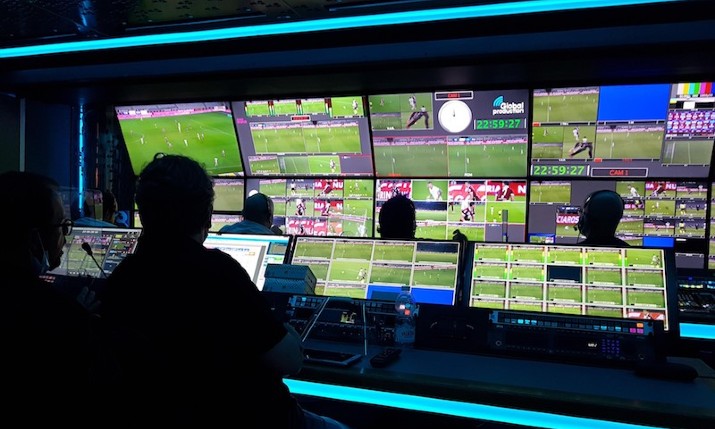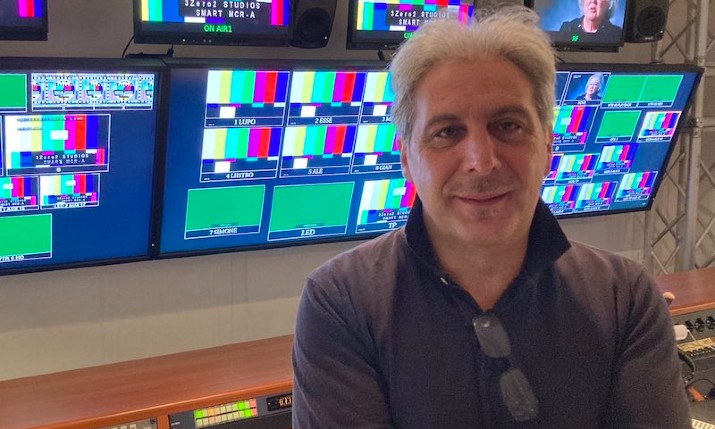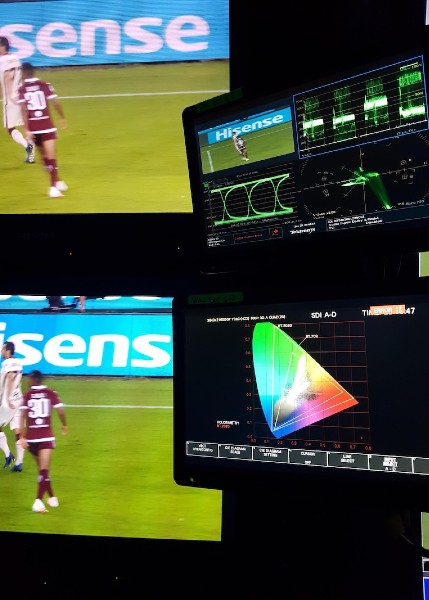Countdown to kick-off: How Global Production helped Sky Italy move Serie A to native 4K HDR

When the 2020-21 Serie A season kicks off this weekend, Sky Italy will be showing seven of the 10 games across each matchday including one per week in native 4K with high dynamic range (HDR).
Viewers in Italy, as long as they have the correct Sky Q box of course, will get to see the games in the Hybrid Log Gamma format, the backwards-compatible HDR standard that was jointly developed by the BBC and NHK.
HDR has been part of the Sky output for Serie A for a couple of seasons. The difference this year is that all the signals are native HDR with BT.2020 colour gamut. There is no upscaling.
The origins of these next generation broadcasts go back to the summer and a game between Torino and Roma on 29 July at the Stadio Olimpico Grande Torino.
That was the first Serie A game to air in native 4K with HDR. And the lessons learnt from that match, which also had an HD-SDR simulcast, shaped how all this season’s matches will be covered.
“The difficulty is twofold. It is not enough to create a technically perfect signal in very high definition UHD-HDR. It is also essential to guarantee quality even on the very popular lower format, HD SDR.”
Global Production, part of the Euro Media Group (EMG), was responsible for the match coverage.
The typical complication of a standard football production in Italy involves the use of a large number of sources – and these all had to be updated to native HDR, because the signal entering the mixer must already be native HDR.
This goal was reached after a series of tests carried out last season and many discussions that were aimed at finding a common path for all the actors involved including producers, broadcasters and clubs, from Juventus and Roma to Infront and Sky the Italian football league itself.
In reality, an HDR live broadcast in Italy had never been done before, because the technical problems to be overcome were far from trivial.

The construction of the new workflow was led by Renato Mancini (pictured above), the chief technology officer of Global Production. He worked with Sky and the Italian Football League to decide on how to concretely carry out the entire production process.
“In Italy, there is no school and there is no experience, especially in Serie A, an environment where everything is very delicate, on which all eyes are focused, and it is impossible to practice live,” he says.
“The difficulty is twofold. It is not enough to create a technically perfect signal in very high definition UHD-HDR. It is also essential to guarantee quality even on the very popular lower format, HD-SDR.
“This is done in down-conversion from HD HDR and requires a whole series of calibrations which, if they are not perfect due to inexperience, penalise the result a lot”.
“Furthermore, the various vendors such as Grass Valley and Sony approach the problem from different points of view, given the complexity of the thing.”
To make these new broadcasts possible, Global Production, starting in January 2020, invested heavily in not just essential changes to one of its flagship mobile vehicles, OB8, adding a huge amount of conversion and color mapping resources, but in human resources too.
Mancini continues: “The problem arises from the fact that HDR is not linear and in the conversion it is not enough to insert a factor that remains constant throughout the range.
“And, above all, to create serious problems is the range of brightness of the cameras, therefore the iris control. If we were to work with apertures in the typical SDR range, nothing would be seen in the simulcast in HDR.
“Furthermore, the various vendors such as Grass Valley and Sony approach the problem from different points of view, given the complexity of the thing. The internal technical chains of the camera controls, very talented technicians, however, require specific training.”
 As a result, a new job role has been created: the “HDR supervisor”. Mancini describes the job as “specialized” and requiring a lot of preparation. This technician works from a dedicated workstation and has a complete view of both the SDR and the HDR output.
As a result, a new job role has been created: the “HDR supervisor”. Mancini describes the job as “specialized” and requiring a lot of preparation. This technician works from a dedicated workstation and has a complete view of both the SDR and the HDR output.
“It works in the HDR range of the cameras, in the upper part of the signal, in the super white (over 100% in the SDR), and in the color zone to constantly check both signals.
“In reality, in Serie A there are six outputs that must be constantly realigned with experience and sensitivity, returning an artistic range, managing the 16 cameras in native 4K-HDR with incredible nuances and details in colour, coupled with greater brightness.”
By embarking on this courageous path, Mancini has made it possible to compose a sort of best practice, a workflow prototype that outlines how to handle the signals. This will be reused by the technical infrastructure in all Serie A matches this season.
The workflow was developed by Global Production in cooperation with the technical management of Sky Italy and delivered to the football league, Infront and to the tv production services, and to all the self-producers operating in Serie A.
He is very grateful to Sky for their help with this assignment.
“We have to thank Sky Italy very much. They believed in the project and invested with great availability of means of production and technology at different levels, even in tests, with constant checks and feedback from the central plant.”
For the graphics, Netco Sports, another subsidiary of the EMG group in Italy, and ISG, also participated in the tests, producing all the on-screen visuals and virtual mats natively in 4K UHD-HDR, perfectly the process of controlling colors, positioning, and white saturations.
All of the graphic sections had to undergo re-elaborations and adaptations, constituting an important benchmark that allowed for the creation of a basic setup that will be re-applied on all future games.
Within the truck, things are different too, says Mancini.
“The internal OB8 workflow is different from the usual: a double simultaneous management of the iris apertures is required and a new HDR master control setup manages all the HDR cameras and also the controls that operate for the HD-SDR.
“There are other systems of other vendors that try to manage this double work by applying offsets for the HDR part, but it is a common opinion that these offsets are still to be built, to date, due to the continuous variable exposure of the necessary calibrations.”
Grass Valley Group devices were used by Global Production within OB8 in order to make it possible to do all the necessary changes live.
The test in Turin confirmed that native HDR can be produced excellently while preserving the HD-SDR signal that still generates the largest audience numbers.
The new season, when it kicks off on Saturday 19 September, will be compliant with the new 4K UHD HDR television sets, the Sky Q receiver, with advertising and promotion, and at least once a week, viewers will be able to see a game in the best quality possible.
The 2020-21 Serie A season starts on Saturday with Fiorentina vs Torino.
